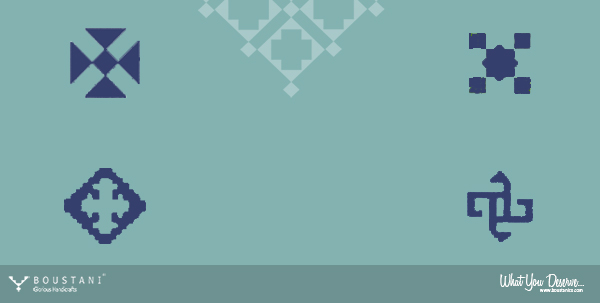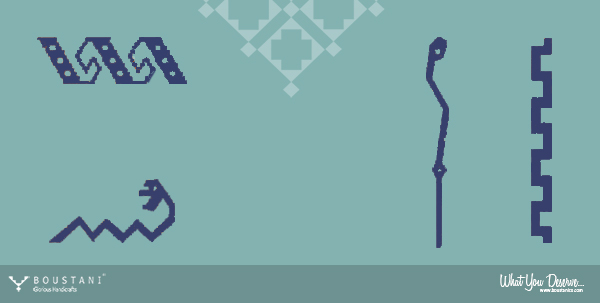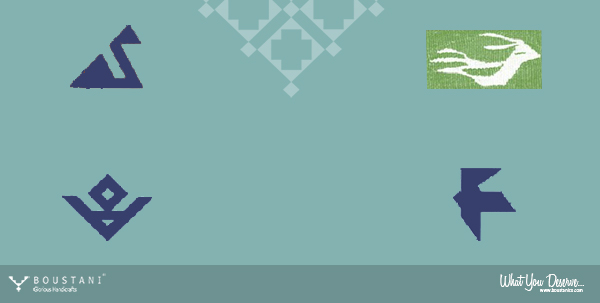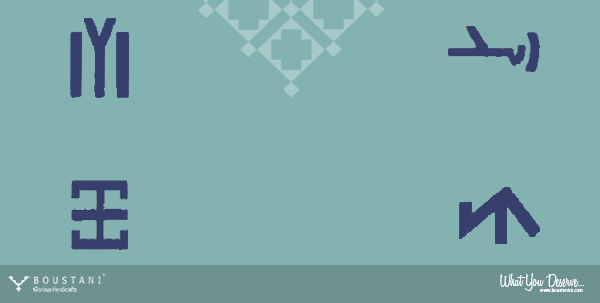Motifs are derived from symbols that were used in ages gone by to inform, communicate and to convey ideas. Over time, some of these signs merged with myths, acquired hidden significance and moved into the world of esoteric symbolism. In this context, their use may not be limited to decorative purposes. Due to the hidden forces they are believed to imply, their primary purpose may well be psychological rather than aesthetic. Here is a comprehensive list of commonly used motifs in Persian rugs…
Cross
Another motif used against evil eye is the cross formed of a vertical and horizontal line.
According to the Persian beliefs, the cross reduces the power of the evil glance by dividing it into four pieces. The motif dates back far before Christianity.
There are crosses in the wall painting of Amir Chakhmaq complex in Yazd, Iran.
A variation of the cross, known as swastika is also being used since very early time.

Snake
The history of mankind is closely related with snakes. All the stories of existence include the theme of a serpent offering Eve the forbidden fruit.
Black snake is the symbol of happiness and fertility.
Here are various snake motifs used in Persian carpets:

Bird
In Persian culture there is no other motif carrying so many different meanings than the bird motif.
While birds like owls and ravens imply bad luck, doves, pigeons and nightingales are used to symbolize good luck. The Bird is the symbol of happiness, joy and love.
It is the soul of the dead. It is longing, and expectation of news. It stands for power and strength. Birds resembling eagles and vultures are described as animals attacking human beings.
The theme of a double headed eagle holding a couple of hares in its claws was later used on the sign of the Seljukian State.

Family Signs
Throughout the history, Persian have used specific figures as a family sign. They have used their mark on their weaves as well as their grave stones.

